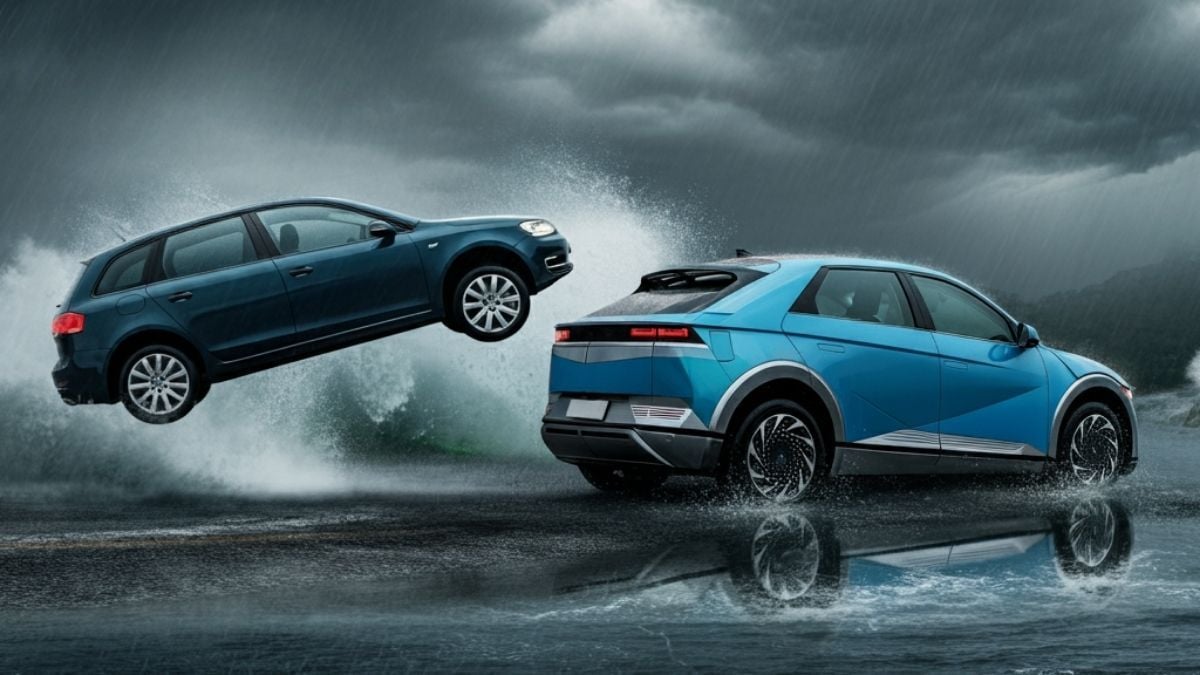Florida has announced that gas stations in the red zone, likely to be hit by the storm and where people are evacuating, are or will soon be out of Gas. This suggests that thousands of people will be stranded on Florida highways or at gas stations, unable to move because they are out of Gas. EVs, however, have three primary advantages in a weather event like this.
Let’s look at each one.
Electricity Is Better Than Gas Before And After A Flood
Electricity is generally a better power source than Gas immediately before and after a flood, at least for transportation. This is because gas tanks tend to be placed below ground and are vented in a way that can allow water penetration if water levels get above the vents. These tanks then need to be pumped out to remove the water, and then that contaminated Gas has to be separated and reprocessed before it can be used.
In recovery, getting electricity working again, because that is what runs communications and most of a city’s infrastructure, is a higher priority than getting gas stations repaired. This means you should be able to charge again long before you can repurchase safe Gas.
In addition, even now, the gas stations have power, but they don’t have gas, suggesting that the EV charging stations are likely still primarily working. That power will remain available until the storm takes out the grid in Florida.
In addition, EVs have batteries sealed against water. While the car may eventually fail due to water penetration, it should perform far better than gas cars unless those cars have been modified to not suck up water into their intakes and hydrolock.
EVs Are Better In Traffic
Gas cars are most efficient at highway speeds, while EVs lose efficiency at speed; thus, in the stop-and-go traffic of those escaping Florida, EVs are getting more than their typical stated ranges while gas cars are getting far less. This means that a typical EV that starts fully charged can likely make it out of the red zone, while gas cars have far more incredible difficulty unless their drivers aggressively use their start-stop systems for those cars that have them. Even so, the gas mileage will drop precipitously, while EVs should hold up just fine, particularly if people turn off their air-conditioning to increase their range.
As a result, I expect more EV drivers, particularly those that started with total charges, to be able to make it out (assuming they can get around the increasingly stalled gas cars) of the red zone than gas cars will. This advantage will improve sharply when the next generation of EVs with 400+ ranges hits the market, and the following generation with 800+ ranges will be a game changer in conditions like this.
EVs Are Less Prone To Wind Events
EVs are not only heavy, they tend to sit lower and be more aerodynamic than their gas counterparts. This means in heavy winds like hurricanes, they should be less likely to be picked up by the wind and tossed. This is potentially a significant advantage when talking about a high-category storm like the Level 5 Florida is facing, as cars tend to be tossed long distances, and the safety systems in all cars aren’t designed for this kind of catastrophe.
In addition, EVs, because they generate maximum torque immediately, can push themselves out of problems better than gas cars if they have traction. In water, given their weight, they should have better traction than a gas car, which will tend to float more. Granted, if the water gets too deep, the EV will sink faster if a window or door is open because of that weight, but that likely isn’t as big a problem as the need to get the car to higher ground rapidly, which should work better with an EV than a gas car with similar tires and configuration.
Wrapping Up:
EVs have unique advantages in getting away from storms like the ones the US East Coast has recently faced. Electricity is often far easier to get than Gas in situations like this, particularly if the owner has moved to solar power (EVs and Solar installations have a natural affinity). EVs hold up better in the kind of stop-and-go traffic that results from an evacuation, making them, assuming they have enough range, a far better choice as an evacuation vehicle, particularly given gas stations can run out of Gas long before the grid fails in situations like this meaning if needed, they can be recharged. Finally, EVs are naturally more resistant to high winds due to being lower and heavier than their gas counterparts.
While EVs have a number of critical disadvantages, mostly tied to their batteries and lack of a large enough charging network, in situations like a hurricane, they may be the better option to get your family to safety if they are fully charged, the battery pack isn’t compromised, and the roads are still passable.
Rob Enderle is a technology analyst at Torque News who covers automotive technology and battery development. You can learn more about Rob on Wikipedia and follow his articles on Forbes, X, and LinkedIn.





